Buddhists Have Never Feared Time – How Aging Can Be A Power In Modern Society
The way in which society is structured by age has changed radically over the past decade. International Monetary Fund statistics indicate that the number of senior citizens (over 65) will outnumber those under 15 globally, and, by 2050, 5%...
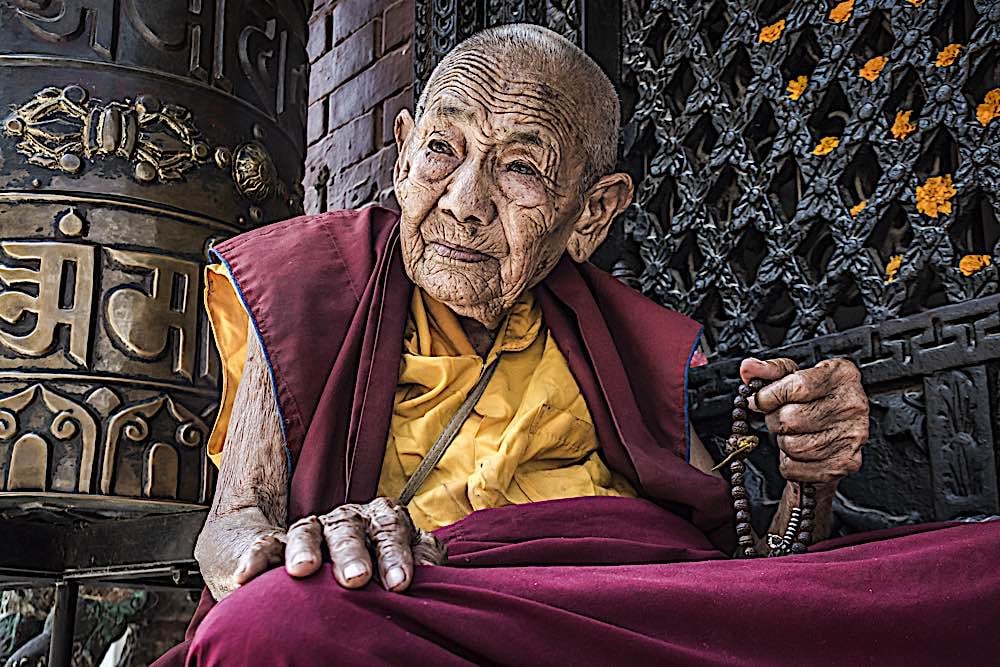
The way in which society is structured by age has changed radically over the past decade. International Monetary Fund statistics indicate that the number of senior citizens (over 65) will outnumber those under 15 globally, and, by 2050, 5% more people will be over the age of 80. The impact of this is already being felt around the world; highly developed countries in the west are facing a pension crisis, while intergenerational societies such as those commonly found in East Asia are facing economic stagnation as young people are increasingly called to care for a greater proportion of elderly relatives.
Contributing writer Karoline Gore
 A lovely portrait of a contented elderly Buddhist nun praying in front of the Bodnath Stupa, Katmandu Nepal Sept 9 2017.
A lovely portrait of a contented elderly Buddhist nun praying in front of the Bodnath Stupa, Katmandu Nepal Sept 9 2017.
Amid this, Buddhists will likely have a sanguine outlook; age has never been a challenge, or something to fear. Can this, however, be put to use in the modern world?
Editors Note: Many traditions of Buddhism have a strong certainty in the concept of rebirth and continuity of lives. Related to this is the understanding of Shunyata (Emptiness and Oneness). This also tends to give comfort to us as we age and as those we love — and our teachers — pass on to their next life. Here’s a video from sister Youtube channel True Rebirth https://Youtube.com/@truerebirth/
Related:
The Nature of Time: Mindful Meditation on Duration Judgment and its Relationship to the Subjective Experience of Time Do you believe in Rebirth? An average of 33% of U.S. Adults and 38% of Indian adults believe in reincarnation. Karma and rebirth are taught in Sutra, but do all Buddhist’s accept the concept? Beautiful Video: White Tara’s healing and long-life mantra beautifully chanted 108x with stunning visualized imagesUnderstanding the Dukkhata Sutra
At the core of the Buddhist approach to aging are the approaches set out in the Dukkhata Sutra. One analysis of the Buddhist approach to aging, published in the Oxford University Press, notes how much of the attitude towards aging in the west focuses around minimizing suffering. A fear of aging is often associated with loss; of friends, emotions, feelings, memories, and so on. The move into elderly years is associated with a loss of independence, change, and everything associated with that.
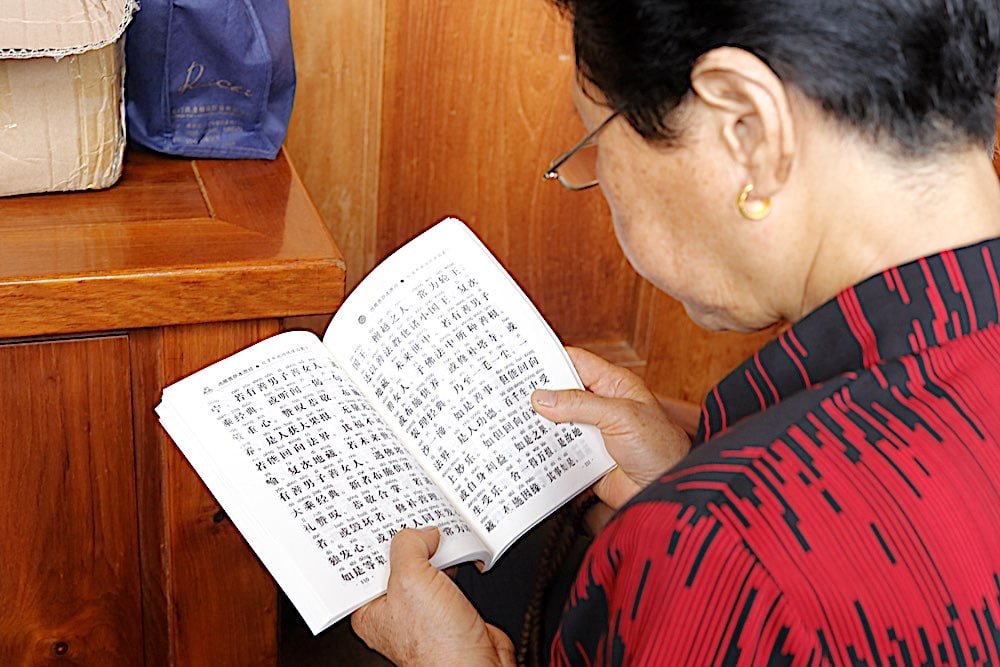 Reading the Sturas is a core practice for all ages.
Reading the Sturas is a core practice for all ages.
In the Dukkhata Sutra, it is stated:
“Monks, there are these three kinds of suffering. What three? Suffering caused by pain, suffering caused by the formations (or conditioned existence), suffering due to change.”
This has long offered guidance to Buddhists, and helps to temper much of the uncertainty towards death. They help to reconceptualize life and its stages, and how, through staying in the moment, there is no age. Fear is one of the “poisons” managed by mindfulness. (When we remain mindful, fear is minimized, including fear of aging.) This helps in managing reactions to the challenges life throws up and retain positivity, whether that’s through the adaptations needed to find independence, or changing social networks.
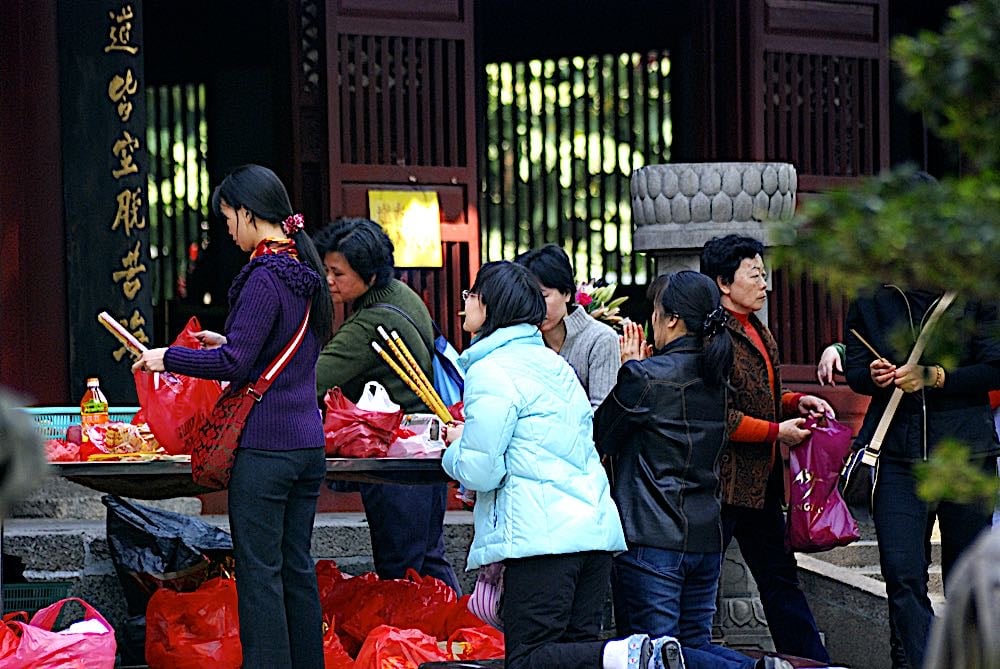 Filial Piety is a core principal in Buddhism, particularly Mahayana Buddhism. The famous Bright Filial Piety Temple in Guangzhou China, Initially built during the Western Han Dynasty (207 BC – 24 AD). The Sutra of Filial Piety remains popular in China.
Filial Piety is a core principal in Buddhism, particularly Mahayana Buddhism. The famous Bright Filial Piety Temple in Guangzhou China, Initially built during the Western Han Dynasty (207 BC – 24 AD). The Sutra of Filial Piety remains popular in China.
The life-death continuum
The idea that life and death are part of the same tract is quite well known even outside Buddhism. Modern teachings reaffirm that; in a question and answer with Geshe Damdul Namgyal, published by the Thubten Chodron, it was highlighted life is like a seed and the next life a sprout.
Within this there is a key principle for Buddhists, and that’s staying active in later life. Now, more than ever, the world demands wisdom for younger generations. By continuing to be active, in the family and in the community, Buddhists have an invaluable opportunity to pass on wisdom to the next generation and ensure that their ‘seed’ becomes the next ‘sprout’.
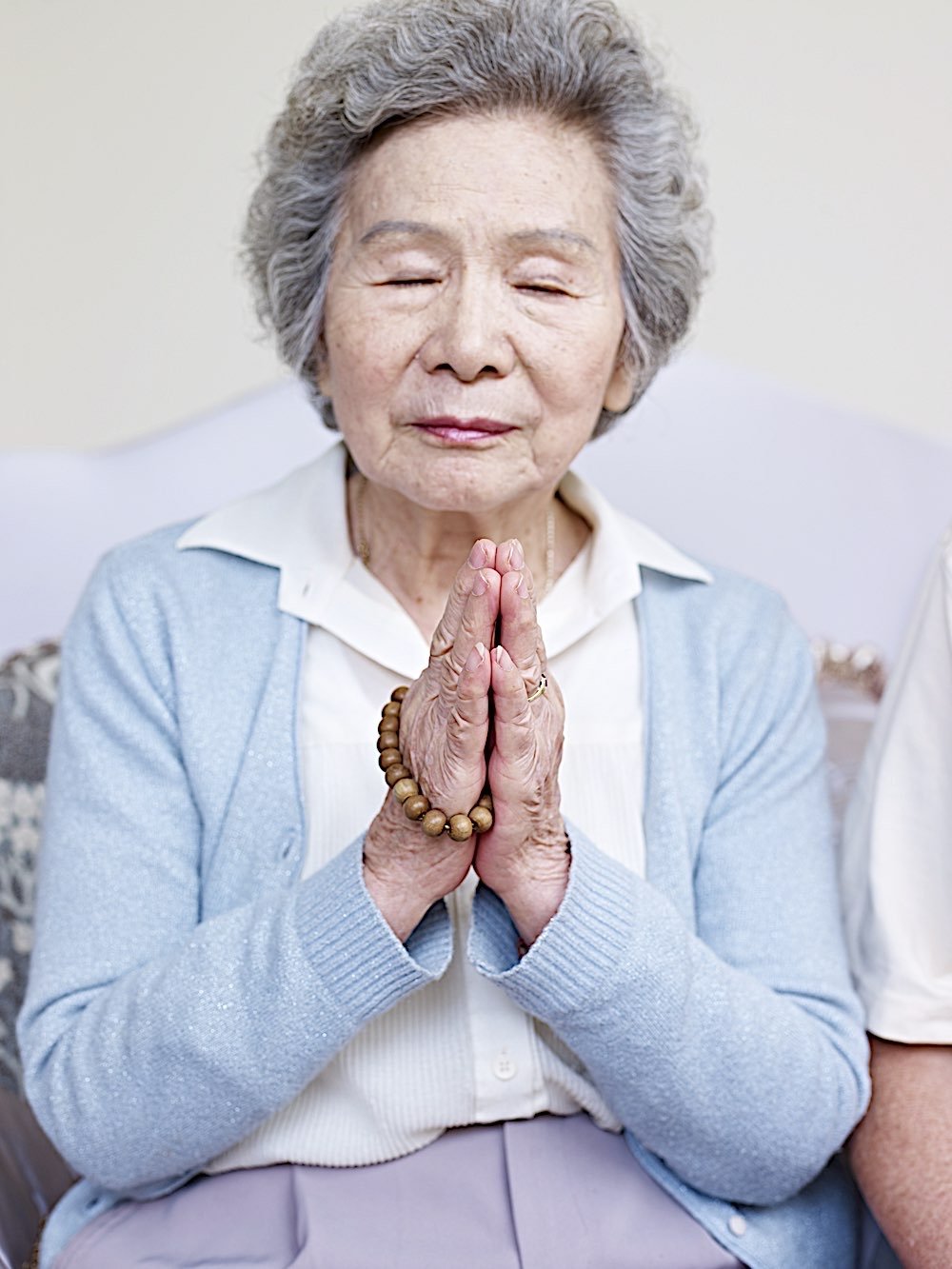 A lovely Buddhist contemplating with her mala beads.
A lovely Buddhist contemplating with her mala beads.
A reciprocal arrangement
There is also a key aspect to clear in aging within the Buddhist community, and that’s caregiving to elderly relatives. As the World Tribune highlights, it’s a virtue within Buddhism to provide care to elderly relatives; it’s both a responsibility and an opportunity. Helping to continue that life-death continuity into the next life is an honor, and a fit way to commemorate a relationship.
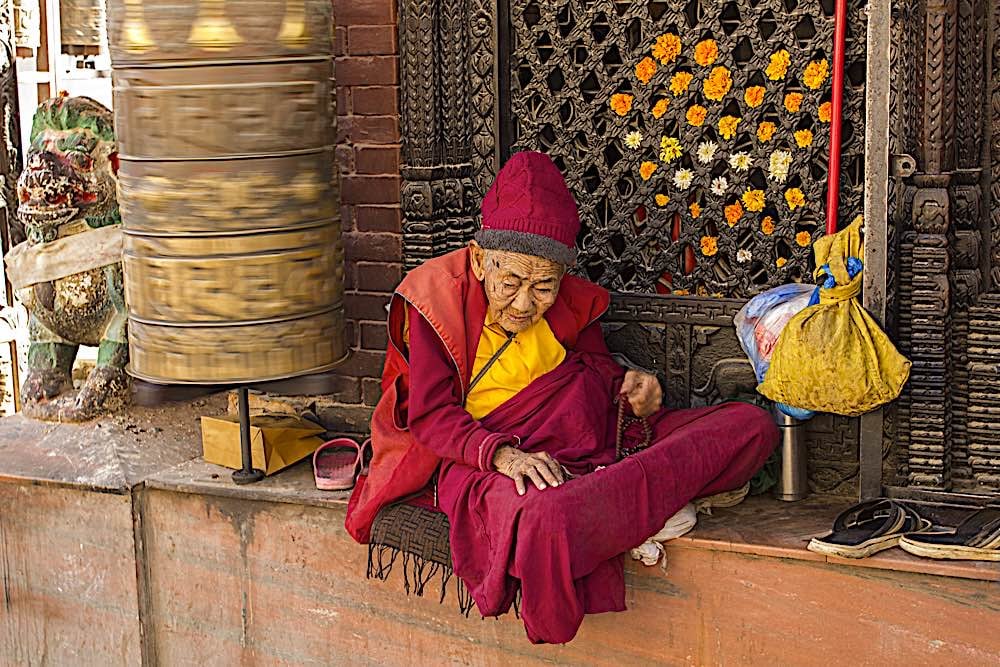 Elderly monastics are revered in Buddhist tradition.
Elderly monastics are revered in Buddhist tradition.
Sutra of Filial Piety
In China and Japan, The Sutra of Filial Piety remains extremely popular still, and especially among Buddhist apologetics. The focus on monasteries can mean that Buddhists focus less on the family home and more on tradition, but there is clear tradition also to show that duty.
Furthermore, as Buddha said, according to Guide to Buddhism
“Having supported me I will support them in return.”
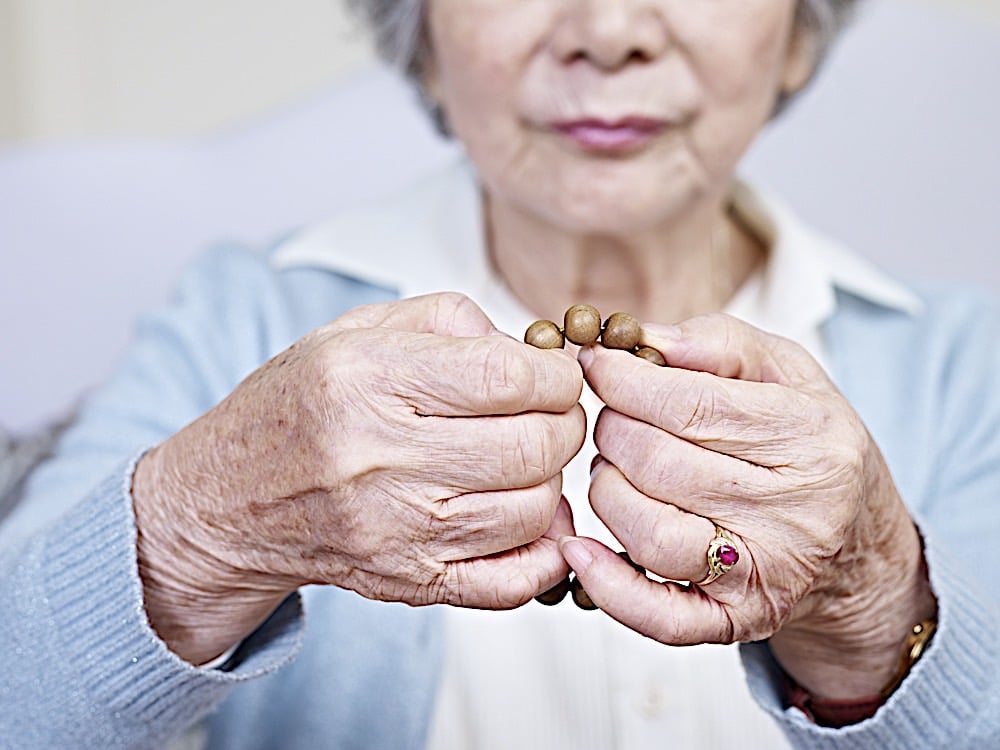
This can expand out of the family, too. Volunteering and providing support to those relatives later in their life will ensure that tradition continues and, potentially, that when those individuals reach later life, they too will have that support. As with all religious tradition, practice is key – and so making sure that living link to the Sutra and its principles is retained is important.
The world is growing older. There are a greater number of people living long past 65 as healthcare improves and society becomes more modernized. For Buddhists, who have a fairly level headed view on aging and death, this is an opportunity. By reinforcing the key lessons of the Sutra and principles of Buddhist lives, Buddhists can play a key role in informing and assisting this new society.

 Hollif
Hollif 
































